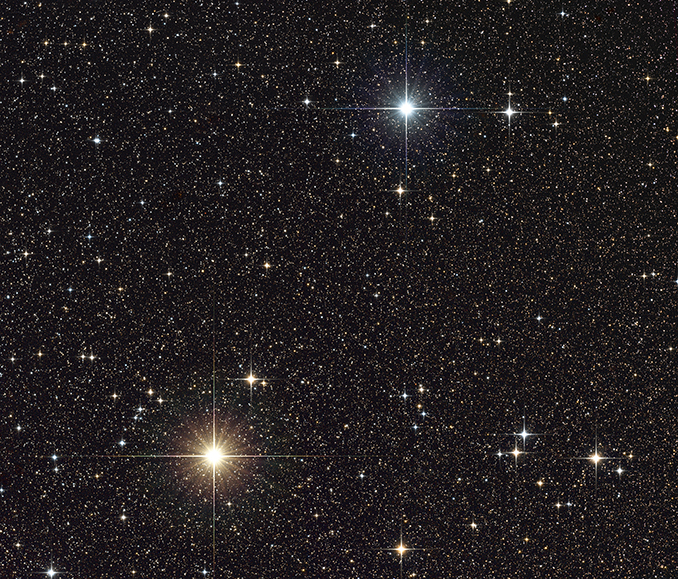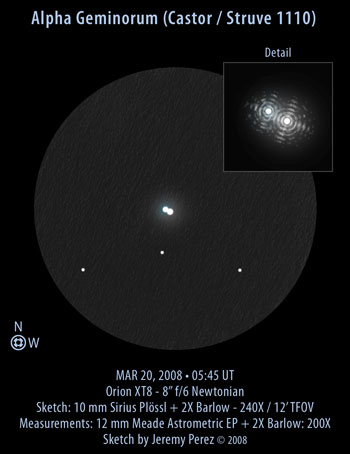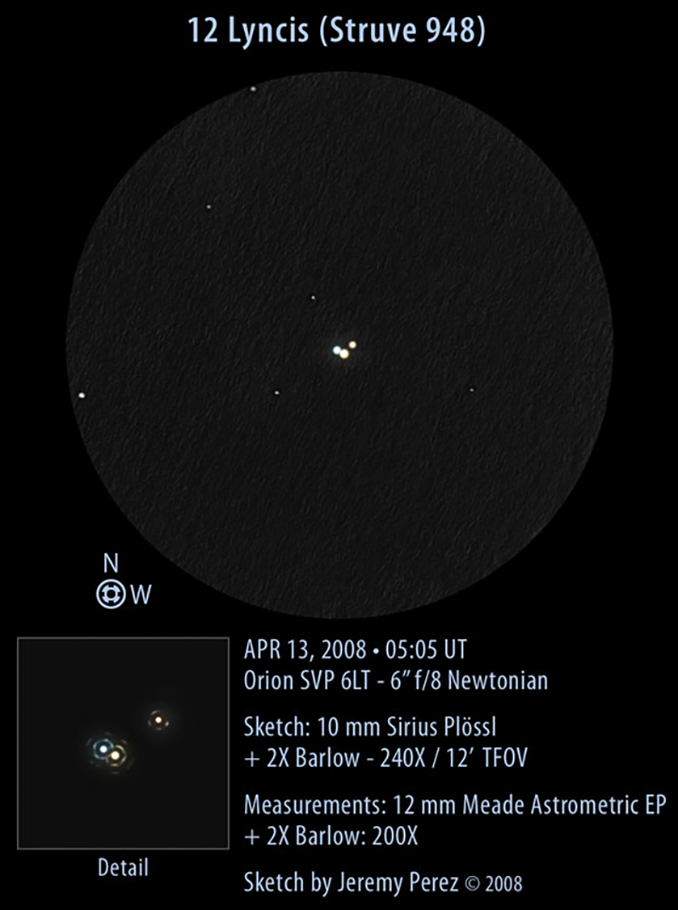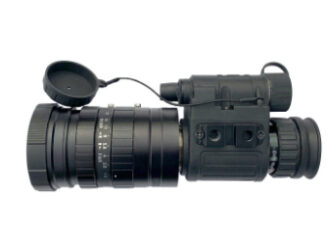
Double and multiple stars are well represented in the late-winter sky. Here’s three great examples to enjoy through a small telescope.
Castor: Gemini’s wonderful multiple star
Gemini’s main stars form a rectangular shape some 20° in length along the major axis, which is orientated north-east to south-west. This asterism is dominated by the bright stars Castor Pollux, an unmistakable pair lying 4.5° apart near Gemini’s eastern end.
Star Castor is famous down the centuries as one of Gemini’s heavenly twins, a status reinforced by Johann Bayer’s alpha star designation in the early seventeenth century, although Pollux is the brighter star of the pair. Turn a telescope on it and you’re in for a delightful surprise, as Castor is a splendid multiple star, one of the finest in the heavens through a small telescope.

Castor is a true binary and not an optical, line-of-sight double; both stars are brilliant white, with Castor A shining at magnitude +1.9, with its fainter companion, Castor B at magnitude +2.9 lying to the north-east (position angle 59°). Their orbit has a 446-year period and presently the pair are widening from their closest separation of about 1.8’ to a current separation of around 4.5’. Both stars are class-A dwarfs that both have spectroscopic companions.
There’s a third star also visible in a small telescope, reddish Castor C, shining at magnitude +9.8 and lying 70” south of Castor A. It too is a spectroscopic double, so the ‘Twin’ is formed of three ‘twins’, making Castor a sextuple system!
At the end of February Castor culminates at about 9pm GMT with a very favourable elevation of nearly 70°.
Zeta Cancri: Tegmine’s multiple-star heaven
Cancer is a constellation of the late-winter to early-spring sky. It occupies the bright-star-poor space between the bright and well-known constellations of Gemini, lying to its west, and Leo, to its east. Three other rather indistinct constellations lie close by; Lynx and Leo Minor mark Cancer’s northern boundary, while Hydra sits to the south. The marvellous Beehive Cluster (Messier 44) is by far its most famous deep-sky resident, though it boasts a couple of outstanding double or multiple stars.
We need to travel to Cancer’s mid-western region to track down Tegmine (zeta [ζ] Cancri, magnitude +5.2). It lies 7° west-south-west of the Beehive Cluster, placing it just under 4° east of Cancer’s boundary with Gemini. It culminates about 45 minutes after Castor at an altitude of well over 50°.
Thankfully, there’s no need to wait for a fine and/or moonless night, or to seek out a dark-sky location when observing most bright double or multiple stars. A small telescope transforms Tegmine into the attractive sight of two yellowish stars which are well matched in brightness (star A is of magnitude +5.3 and star C shines at +5.9) and easily split through a 80mm (~three-inch) telescope thanks to a wide separation of 5.9”.
Bring to bear the resolving power of a 100–150mm (four- to six-inch) telescope operating at high power and given steady seeing you may see that star A splits again, with a magnitude +6.2 star, star B, situated just under an arcsecond away to the north-east (position angle 72°). This can be a tough split, as many observers report seeing merely the oblong shape of the stars in contact, even through apertures larger than 150mm.

12 Lyncis: a beautiful triple star
Apparently barren Lynx lies west of Ursa Major and north of Cancer. Despite a paucity of bright stars to mark its extensive territory, it hosts a handful of nice double stars, including 19 and 38 Lyncis. But perhaps its outstanding example is 12 Lyncis, a marvellous triple star for small telescopes lying in the constellation’s far northern region, close to the boundary with Camelopardalis.

Its three components shine together at magnitude +4.8, making it a little tricky to track down; the nearest bright star is mag. +3.7 delta Aurigae, eight degrees to the south-west.
A 100mm (four-inch) ‘scope operating at a magnification of around 150x reveals a pale yellow magnitude +5.3 primary hugging a bluish secondary shining at magnitude +6.2, the two separated by 1.9”. The third star glows a dull orange at magnitude +7.2, with a more forgiving 8.8” separation from the primary.




